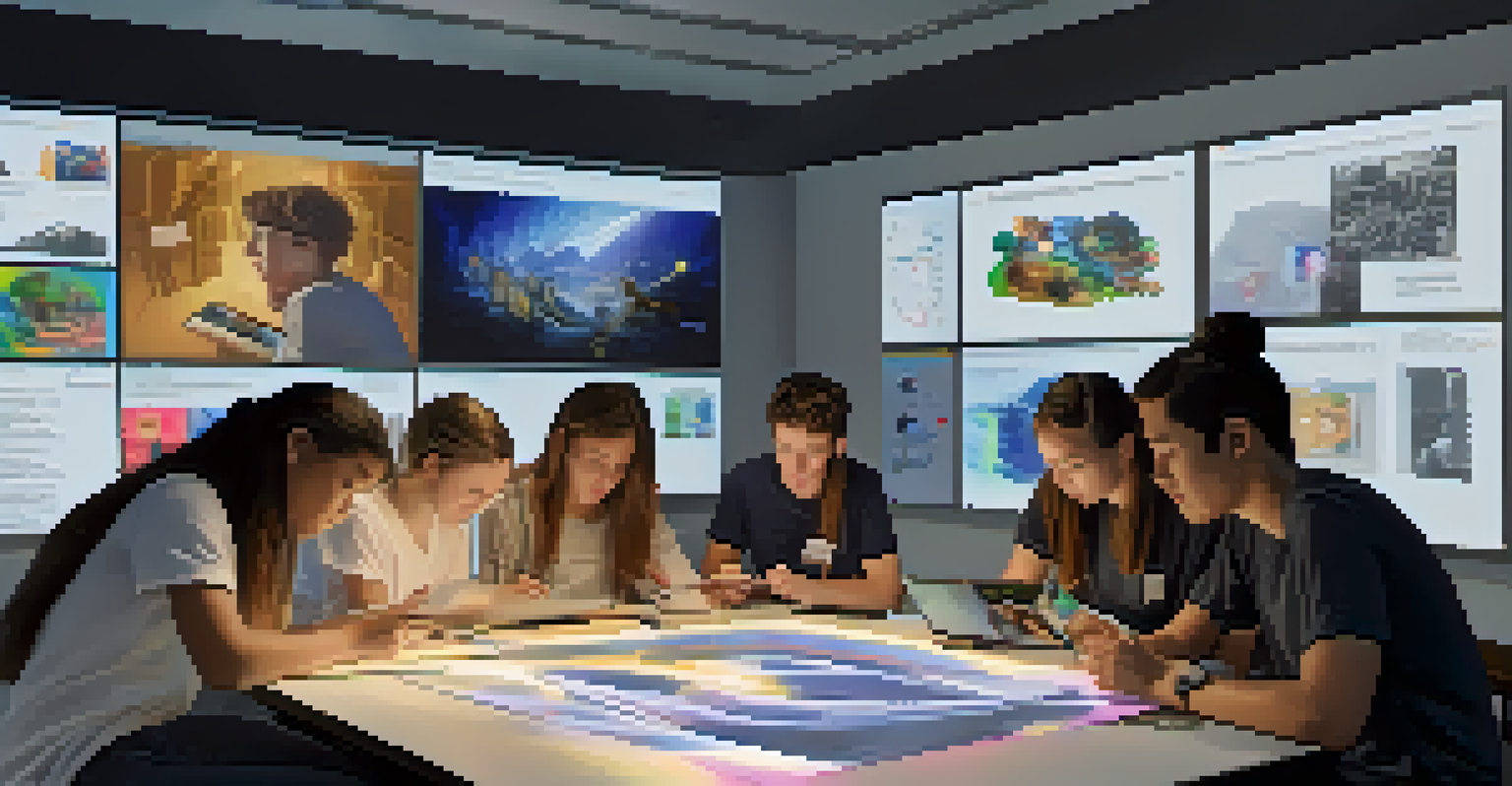The Role of AR in Enhancing Emotional Intelligence in Students

Understanding Emotional Intelligence and Its Importance
Emotional intelligence (EI) refers to our ability to recognize, understand, and manage our own emotions while also empathizing with others. This skill is crucial for students as it enhances their social interactions and academic performance. In a world increasingly driven by technology, developing EI in educational settings has become more important than ever.
Emotional intelligence is not about being nice; it is about being smart about your emotions and the emotions of others.
Students with high emotional intelligence are better equipped to handle stress, resolve conflicts, and communicate effectively. These traits not only contribute to personal well-being but also foster a positive learning environment. As educators look for innovative ways to cultivate EI, technology, particularly augmented reality (AR), offers exciting possibilities.
AR allows students to immerse themselves in scenarios that require emotional engagement, helping them practice empathy and emotional regulation. By bridging the gap between theory and real-life application, AR can transform the way students experience and develop their emotional intelligence.
What is Augmented Reality and How Does It Work?
Augmented reality is a technology that overlays digital information onto the real world, enhancing our perception of our surroundings. This can be experienced through smartphones, tablets, or AR glasses, making it accessible and engaging for students. By merging the virtual and physical worlds, AR creates interactive experiences that are both educational and captivating.

For instance, a student may use an AR app to visualize complex emotions by interacting with animated characters that exhibit different feelings. This not only makes learning about emotions more tangible but also encourages students to explore and discuss these feelings in a safe environment. Such experiences could lead to deeper understanding and retention of emotional concepts.
Emotional Intelligence Enhances Learning
Developing emotional intelligence in students is essential for improving their social interactions and academic performance.
As AR technology continues to evolve, its applications in education are boundless. This innovative tool can help students navigate social situations, role-play various scenarios, and even practice conflict resolution—all essential components of emotional intelligence.
How AR Can Enhance Empathy in Learning Environments
One of the most significant aspects of emotional intelligence is empathy, the ability to understand and share the feelings of others. AR can enhance this crucial skill by placing students in the shoes of different characters in various situations. For example, an AR simulation might allow students to experience the challenges faced by a peer from a different background, promoting understanding and compassion.
The greatest gift you can give someone is your own happiness. When you are happy, you can give more to others.
By engaging with these immersive experiences, students can reflect on their emotions and reactions in a way that feels real and immediate. This not only helps them grasp the complexity of others' feelings but also encourages open discussions about empathy and support. In essence, AR transforms emotional learning into a shared journey.
Moreover, these experiences can foster a sense of community among students. When they engage in AR activities that promote empathy, they build stronger connections with their peers, which is fundamental for a supportive classroom environment.
Developing Self-Regulation Skills Through AR Experiences
Self-regulation is a key component of emotional intelligence, enabling individuals to manage their emotions and behaviors effectively. Augmented reality can assist students in honing these skills by simulating situations where they need to practice self-control and decision-making. For instance, an AR scenario may present a stressful social situation, prompting students to navigate their responses thoughtfully.
Through repeated exposure to these AR experiences, students can learn to identify their emotional triggers and develop strategies for managing their reactions. This hands-on approach is often more impactful than traditional methods, as it allows students to experiment with different responses in a safe space.
AR Boosts Empathy and Understanding
Augmented reality can create immersive experiences that help students practice empathy by stepping into others' shoes.
As they practice self-regulation in these immersive scenarios, students build confidence in their ability to handle real-life challenges. This not only improves their emotional intelligence but also prepares them for future situations where emotional management is crucial.
Encouraging Collaborative Learning with AR Tools
Collaboration is vital for developing emotional intelligence, as it requires students to communicate and work together effectively. AR tools can facilitate collaborative learning experiences, allowing students to engage in group activities that promote emotional awareness. By working together in AR environments, they can share perspectives and learn from one another.
For example, students might engage in an AR project where they must solve a problem that requires emotional insights. As they discuss their thoughts and feelings, they not only strengthen their social skills but also enhance their understanding of emotional dynamics within a group setting.
These collaborative experiences can lead to deeper connections among students, fostering a sense of belonging and support. As they navigate the challenges of teamwork, their emotional intelligence grows, equipping them with crucial skills for future interactions.
Potential Challenges of Integrating AR in Education
While the benefits of AR in enhancing emotional intelligence are promising, there are challenges to consider. Implementing AR technology effectively requires adequate resources, training, and support for educators. Schools may face budget constraints or limited access to the necessary devices, which can hinder the widespread adoption of AR tools.
Moreover, not all educators may feel comfortable incorporating AR into their teaching methods. Professional development and training are essential to ensure teachers can confidently use these tools to foster emotional intelligence in their students. Without proper guidance, the potential of AR may remain untapped.
Collaboration is Key in EI Development
Collaborative AR activities promote emotional awareness and strengthen social skills among students.
Lastly, it’s important to monitor how students engage with AR experiences. While the technology can provide valuable insights into emotional learning, it’s crucial to address any potential distractions or negative impacts on social interactions, ensuring that the primary focus remains on developing emotional intelligence.
Future Directions for AR and Emotional Intelligence in Education
Looking ahead, the integration of AR in education presents exciting opportunities for advancing emotional intelligence among students. As technology continues to evolve, we can expect more sophisticated AR applications that provide even richer emotional learning experiences. Innovations such as real-time feedback and adaptive scenarios could further enhance students' engagement and learning outcomes.
Additionally, as educators and developers collaborate, we may see the emergence of comprehensive AR curricula specifically designed for emotional intelligence development. This could standardize best practices and ensure that all students have access to high-quality emotional learning experiences.

Ultimately, the goal is to create an educational landscape where emotional intelligence is prioritized, preparing students not just academically, but socially and emotionally for the challenges of the future. With AR as a powerful ally, we can help shape a generation of emotionally intelligent individuals.